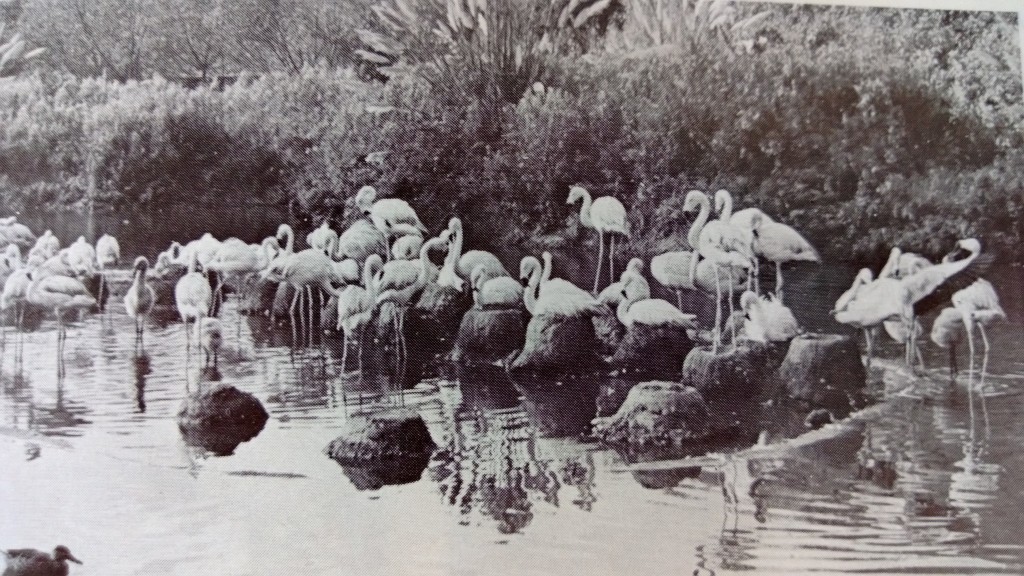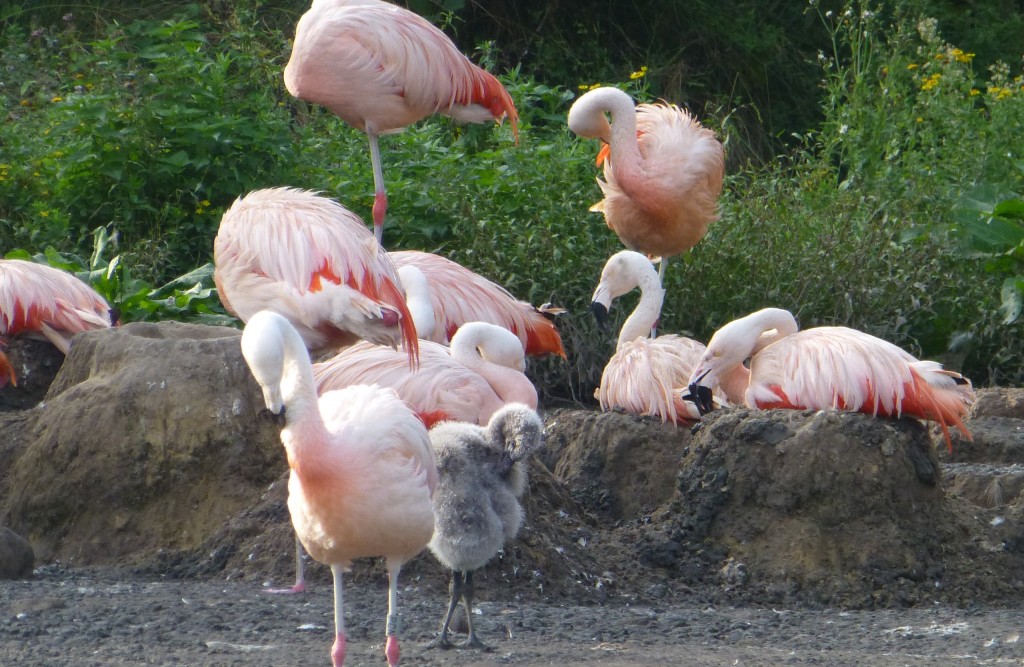Update on the juvenile bonanza
I have been away from WWT Slimbridge for a few weeks and so it has been a pleasant surprise to come back and find so many bundles of fluff running around the legs of taller, pink parents. Or indeed, in some cases, how quickly bundles of fluff have turned into grey/brown lanky juveniles. The flamingo equivalent of teenagers. New arrivals in the Caribbean flock are growing fast, benefitting from the weeks of warm sunshine and kind autumn weather that 2013 has brought. They can be seen milling around the edge of the main flock, quietly squabbling with one another.
As has been mentioned many times, the real stars of this year have been the Chilean flamingos. And not just those birds at Slimbridge, but also at Martin Mere and the hatching eggs at Washington. However, the Slimbridge flock is currently looking rather fine, a shining example of how a well-managed flock can reward hard-work on the part of its keepers with many eggs and chicks.
A friend of mine recently sent me a copy of an old "Wildfowl Trust" guide book from the 1970s and I have scanned in a photo to share (apologies for any copyright infringement lovely WWT publishing folks!) as I found it quite fascinating. I have mentioned before that flamingos build large nests that are added to as the breeding season progresses. I have also mentioned that flamingos are renown for their longevity, with the potential for reaching a grand old age. So compare the wonderful set of behaviours you see in the photos below...


It is incredible to think that birds pictured in the black and white photo are still part of this breeding flock some four decades later. It is heartening to see that the important nest building behaviours that are crucial to survival continue over the many decades that these birds have been held by WWT. And what is more important is that being managed in the environment at Slimbridge does not affect how capable the flamingos are at building the right kinds of nest. Evidence indeed that a captive flamingo shows the normal behaviours associated with its species. With so many Chilean flamingo chicks scampering around the South American Pen currently, it is fascinating to watch the interactions between adults and chicks. A new generation of the flamingo soap opera has arrived!



